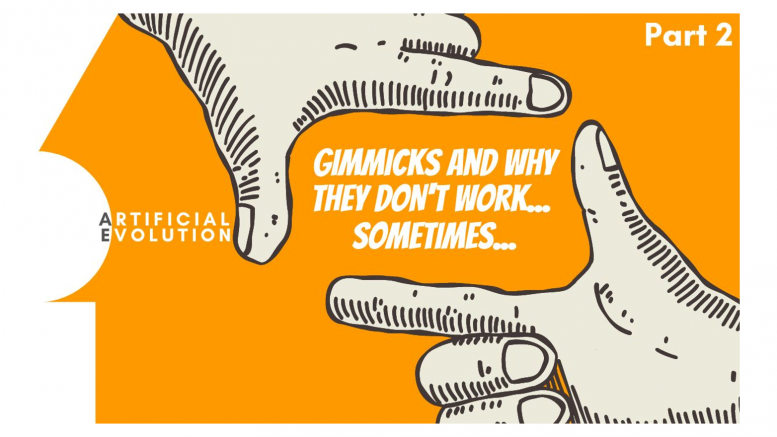A couple of weeks ago, we spoke about what gimmicks were and how if used correctly, can seriously drive market demand and brand recall. This is part 2 of that series.
When things don’t go right…
But I made it funny and stuff. Why didn’t it work?
Successful marketing gimmicks need a deep understanding of the target audience, careful planning and execution, alignment with brand values, and the ability to deliver on promises. (Woah, that was a long jargony sentence)
In short, try aligning the gimmick to who you are. The more it speaks to your audience “in your way”, the more it works. Conceptualisation and execution are, of course, the most important.
Broadly, there are 4 broad reasons why they don’t work:
- Lack of relevance: If a marketing gimmick or campaign is not relevant to the target audience or does not align with their needs, interests, or values, it is likely to fall flat. For a gimmick to be effective, it should resonate with the audience and provide a compelling reason for them to engage or take action. Irrelevance can lead to disinterest or even alienation from the target audience.
Back in 2017, Kendall Jenner partnered with Pepsi. The idea was to drive the message of togetherness in the social justice movements. In light of the BLM movement, this was seen as completely tone-deaf and unnecessary.
2. Misalignment with brand image: Marketing gimmicks inconsistent with a brand’s identity create confusion. If a gimmick feels forced or disconnected from the brand’s messaging, it may result in scepticism or even backlash from consumers. It is important for marketing gimmicks to be authentic and align with the brand’s positioning and reputation.
The most recent PR disaster was the BudLight Influencer promo campaign by the AB Group. The problem wasn’t their collaboration with the trans influencers. It was about the relevance of the message + timing (it was April 1st) and of course the lack of PR planning for managing the fallout.
- Poor execution: Even with a creative concept, the execution of a marketing gimmick can make or break its success. If the execution is lacking in quality, clarity, or impact, it can fail to capture the attention or interest of the audience. Gimmicks should be executed with careful attention to detail, ensuring that they are engaging, well-crafted, and effectively communicate the desired message.
Sometimes the execution is garbage. It happens.
McDonald’s launched a good idea: Make a testimonial campaign with customers: McDStories on Twitter. The problem arose when they couldn’t control the narrative and it got out of hand.
4. Overpromising or misleading claims: Gimmicks that rely on exaggerated claims, false promises, or misleading information can (and usually do) backfire. In an era of informed and discerning consumers, transparency and honesty are essential.
I’m not going to explain. I’m just going to leave this here
And we all know what happened with VW in 2016.
The long and short of it.
Gimmicks should be fun. They’re created to drive recall and conversation online and offline. As a communicator, we must understand “how can this get f***ed up” and prepare for it. Yes, there will be some that won’t work. And yes there multi-billion dollar organisations that it wrong sometimes. But does that mean gimmicks aren’t good?
Absolutely not.
I made one on Reputation today too.
Stay curious. Stay Secure.
See you next fortnight.
The views and opinions published here belong to the author and do not necessarily reflect the views and opinions of the publisher.



Be the first to comment on "Gimmicks and why they don’t work… Sometimes"